The Baal Shem Tov—A Brief Biography

Keter Shem Tov, "The Crown of the Good Name," the first book of Rabbi Yisroel’s teachings, published in Zalkevo, 1794, more than thirty years after Rabbi Yisroel’s passing.
During the late 17th century, European Jewry was still reeling from the devastation wrought by the Khmelnitsky pogroms of 5408 and 5409 (1648-1649 CE). The massacres had left tens of thousands of Jews dead, and the grief-stricken survivors struggled to rebuild their broken lives and communities.
In the wake of the pogroms, the infamous Shabtai Zvi led thousands of despairing Jews to believe that he was the long-awaited Messiah destined to redeem them from exile. Many Jews were inspired with the hope that their suffering would soon end, but after Shabtai Zvi turned out to be a fraud – he converted to Islam under pressure from the Ottoman Turks – they were plunged back into the bitter reality of shtetl life.
A rift developed between the learned and unlearned Jews, to the point that the two groups prayed at separate synagogues After the pogroms, many families were left without a livelihood and the vast majority of children were forced to abandon their Torah study at a very young age, sometimes as young as five or six years old, to help provide for their families. Only the wealthy – far and few in between – could afford a proper Torah education for their children. This resulted in a generation of largely ignorant, yet pious and devoted Jews who were, for the most part, neglected and scorned by the learned elite—the Talmudists. A rift developed between the learned and unlearned Jews, to the point that in many towns the two groups prayed at separate synagogues.
Against this troubling backdrop, in the small Polish town of Tloste,2 Eliezer and his wife Sarah lived a life of simple piety, serving G‑d with a pure heart. Although seemingly unlearned, Eliezer was actually a member of the fellowship of "hidden tzaddikim," a group of unusually gifted and devoted Jews who, disguised as simple people, dedicated their lives to improving the plight of their Jewish brethren both spiritually and materially.
In their old age, on the 18th of Elul, 5458 (16983), Eliezer and Sarah gave birth to their only child—Yisrael.
This child was destined to infuse vitality into a suffering, depressed people. His name, Yisrael – "Israel" – is also the name of the Jewish People. His birth would serve as a wake-up call for a nation deep in a spiritual slumber.
Childhood
When Yisrael was five years old, both his mother and his father died. Before his death, Eliezer called his son Yisrael to his bedside and told him, "Fear no one but G‑d. Love every Jew with all your heart and soul, no matter who he is." These two directives would serve as the basis for Yisrael's service of G‑d and future teachings.The Jewish community of Tloste adopted the young orphan, providing him with his basic needs. Often, after the conclusion of his studies at the local cheder (Jewish school), Yisrael would wander into the fields and forests that surrounded the village. It was in this picturesque setting, secluded and removed from the bustle of everyday life, that Yisrael was able to meditate and recognize the wonders of G‑d's creation.
On one such excursion, some two years after his parents' passing, little Yisrael chanced upon a saintly man praying in the forest. After introducing himself, Yisrael and the elderly man sat quietly in the forest and studied the holy words of the Talmud. The man's scholarship, quality of character, and humility made it apparent that he was a hidden tzaddik. Yisrael joined him on his wanderings,4 and they meandered from village to village, town to town, Yisrael's mentor all the time posing as a simple peddler. Much of their time was spent in intense study and fervent prayer. Alas, Yisrael would never learn the identity of this mysterious man.
Yisrael was introduced, like his father before him, to the secret fellowship of hidden tzaddikimYisrael was periodically hired as a teacher's assistant in the cheders of the small villages through which they passed. He would later relate that he took great pleasure in accompanying the children to and from school, using this opportunity to recite prayers with them and tell them Torah stories. The children's innocence and the purity with which they prayed, the Baal Shem Tov explained, caused the Almighty great satisfaction. The Mezritcher Maggid, the Baal Shem Tov's successor, would later say, "If only we kissed a Torah scroll with the same love that my master [the Baal Shem Tov] kissed the children when he took them to cheder as a teacher's assistant!"5
After three years of this nomadic lifestyle, Yisrael was brought by his mentor to the house of a man by the name of Rabbi Meir, who assumed guardianship of the still-young lad. Like Yisrael's first guardian, Rabbi Meir, too, was a hidden tzaddik, and while the people of his town thought him to be a manual laborer, he was in fact a great Torah sage.
It was in Rabbi Meir's home that Yisrael was introduced, like his father before him, to the secret fellowship of hidden tzaddikim. The great men would regularly convene in Rabbi Meir's house to study the mystical works of the Kabbalah and to pray together. Yisrael easily absorbed this knowledge, and he soon became the student of the leader of this fellowship, the revered Rabbi Adam Baal Shem. Rabbi Adam would serve as his longtime mentor, and his teachings laid the foundation for Yisrael's own work.
On Yisrael's sixteenth birthday, Elijah the Prophet appeared to him and described to him the great effects the prayers of simple folk had in heaven. Their pure intent and the unwavering faith with which they uttered the words of prayer, Elijah explained, resonated in the "higher worlds" more than the scholarly achievements of great sages. Inspired by his conversation with the prophet, Yisrael made it his personal mission to engage simple Jews in conversation about mundane matters. By inquiring as to their wellbeing and their families' health or livelihood, Yisrael was able to elicit responses rich in words of praise to G‑d. To read a story of one such conversation, visit G‑d's Nourishment.
See The Baal Shem Tov's Sixteenth Birthday for the Baal Shem Tov's own account of his life up to this point, as related by the previous Lubavitcher Rebbe, Rabbi Yosef Yitzchak Schneerson.
Yisrael as a Hidden Tzaddik
When Yisrael was eighteen years old, the Tloste community suggested a wife for him. Little is known of Yisrael's first wife, and she died soon after their marriage.The Baal Shem Tov would later remember the years in the Carpathian Mountains as being the most enjoyable of his lifeAfter his wife's death, Yisrael was hired as a teacher in the Tloste cheder.6 It was at this time that Yisrael's deep insight into human nature began to shine, and he was often asked to preside over civil disputes between members of the community.
A short time later, in 5478 (1718), Yisrael moved to the town of Brody, where he was, once again, hired as a teacher. In this capacity,7 Yisrael was asked to tutor a young orphan who had been adopted by the illustrious Rabbi Gershon of Kitov, renowned for the breadth of his knowledge in both Talmud and Kabbalah. This position eventually led to Yisrael marrying Rabbi Gershon's sister, Chana.8

Rabbi Yisroel’s prayer book, found today at the Central Lubavitch Library, Agudas Chasidei Chabad.
The young couple soon gave birth to their daughter, Odl. Their son, Tzvi Hersh, would be born fifteen years later.
Yisrael's stay in Brody was short-lived; one of Yisrael's teachers from the fellowship of hidden tzadikim9 instructed him to move to a small town. And so, Yisrael and his wife left Brody and settled in a small village deep in the Carpathian Mountains to the east.10
Yisrael spent most of his time there in secluded study and meditation. The young couple supported themselves by mining clay and lime, which Chana transported to neighboring villages using a horse and wagon that Rabbi Gershon had previously bought them. The breathtaking scenery and relative freedom from the demands of everyday life allowed Yisrael to concentrate on his studies and service of G‑d. The Baal Shem Tov would later remember the seven years in the Carpathian Mountains as being the most enjoyable period of his life.
In 5484 (1724), on Yisrael's 26th birthday, the ancient prophet Achiya Hashiloni – who had taught Torah to Elijah the Prophet some 2,500 years earlier – appeared to him. Achiya taught Yisrael the secrets of the entire Torah, starting that day with the first words of the Torah, "Bereishit," and ending exactly ten years later with the last words of the Torah.
In 5490 (1730), Yisrael found employment as a shochet (ritual slaughterer) in Kshilowice,11 but soon moved on to manage a tavern in Tloste that his brother-in-law had bought for him. During his time in the mountains, Yisrael had come into contact with local villagers who taught him the healing properties of various herbs and other plants. Now, Yisrael started applying his newly-acquired knowledge by prescribing remedies and writing amulets for locals who were in need of cures for a variety of bodily ailments. Yisrael's practice was successful and his fame as a baal shem12– a healer – grew quickly. Increasingly, people from surrounding villages sought out his expertise.
As much as he aimed to cure his patients' physical illnesses, he sought to heal their ailing spiritsBut Yisrael Baal Shem was far from an ordinary healer. As much as he aimed to cure his patients' physical illnesses, he sought to heal their ailing spirits. Yisrael taught them the importance that the Torah places on optimism and joy and encouraged them in their service of G‑d. It was this unique, twofold pursuit that earned Yisrael Baal Shem the additional, affectionate title "tov" ("good"), thus giving rise to his popular name—Rabbi Yisrael Baal Shem Tov.
Revelation and Leadership
While the Baal Shem Tov expanded his circle of influence, helping his patients one at a time, he kept the full extent of his knowledge and saintliness hidden from the public eye. But in 5494 (1734) all this changed. On his thirty-sixth birthday, after six years of intense, unyielding pressure from his long-time mentors Rabbi Adam and Achiya Hashiloni to publicly reveal his greatness, the Besht began preaching openly.
The town of Mezhibush, where Rabbi Yisroel resided, today.
This ushered in a new era in Jewish thought. In the Besht's view, the simple blessing of the unlettered Jew was as holy as advanced Torah study, purity of intent was valued over dry achievement, joy and humility were to be admired, and even the simplest peasant could serve G‑d through passionate prayer. Jews from far and wide flocked to hear the Baal Shem Tov's holy words and to observe him consumed in prayer.
In 5500 (1740), when he felt that his following was sufficiently strong, the Besht moved the center of chassidism to the small town of Mezhibush, where he would live for the rest of his life.13 Many of the greatest Jewish minds of the generation came to study in the court of the Baal Shem Tov and made Mezhibush their home. Rabbi Yaakov Yosef of Pulnaa, Rabbi Pinchas of Koritz, and Rabbi Dovber (who would later succeed the Besht as leader of the Hasidim) were just a few of the brilliant scholars who came to hear the Baal Shem Tov's wisdom. These faithful students, leaders in their own right, would eventually, after the Baal Shem Tov's passing, become the conduits through which chassidic thought was transmitted to European Jewry.
But even then, surrounded by academic geniuses who clung to his every word, the Baal Shem Tov continued to shower the simple folk with remarkable affection. For more on this, see The Singing Heart.
Many of the greatest Jewish minds of the generation came to study in the court of the Baal Shem Tov and made Mezhibush their homeOn Rosh Hashanah of 5507 (1746), the Baal Shem Tov had a vision wherein he ascended to heaven and entered the chamber of Moshiach. The Besht asked Moshiach, "When will the Master [Moshiach] come?" Moshiach responded, "... when your wellsprings [the teachings of chassidism] will burst forth to the farthest extremes." For a detailed account of the Baal Shem Tov's vision, see The Chamber of Moshiach.
Despite, or perhaps because of, his popularity, the Baal Shem Tov's teachings were met with strong opposition from much of the traditional Talmudist movement. The opponents of chassidism were driven by a desire to retain their elite positions as well as by their suspicion that the Kabbalistic undertones of the Baal Shem Tov's teachings belied his true intentions—to promote himself as a Messiah, just as Shabtai Tzvi, who had also taught Kabbalah, had done not a century earlier. Their growing distaste for the Besht's glorification of the ignorant, and his unconventional claim that G‑dliness permeates even the most mundane of matters, led them to reject his entire doctrine.
The debate would rage on bitterly for several generations. In time, the opponents of chassidic thought would come to appreciate its truth and holiness. Although not all the Talmudists would embrace chassidism, and despite the ideological differences that would continue to stand in the way, a general atmosphere of mutual respect would replace the initial vicious mudslinging.
The 1750s saw the rise of a fringe sect of Judaism led by the infamous Jacob Frank. The Frankist, as they were commonly called, were the spiritual descendents of Shabtai Tzvi, and like his predecessor, Frank claimed to be the Messiah and sought to create a religion that would incorporate both Judaism and Christianity. Both chassidic and Talmudist rabbis fought hard to put an end to the spreading influence of the heretical Frankists. In 5519 (1759), the Besht was chosen to be one of three delegates representing the rabbis in a highly publicized debate with the Frankists in Lemberg. Soon after the debate, thousands of Frankists underwent baptism to demonstrate their loyalty to Christianity. While many prominent Jewish figures felt relieved by the baptisms, because this clearly demonstrated the Frankists' cut with traditional Judaism, the Baal Shem Tov was deeply saddened by the move. "As long as a diseased limb is connected to the body, there is hope that it may be saved; but once amputated, it is gone, and there is no hope," the Besht lamented. It is said that the distress caused to the Baal Shem Tov by his ordeal with the Frankists ultimately led to his death.
Miracle Worker

The resting place of Rabbi Yisroel in the town of Mezhibush, during the Communist Era.
In one story, a quarrel erupted between two local men in the Baal Shem Tov's synagogue. In a fit of anger, one of them shouted, "I will tear you to pieces like a fish." The Baal Shem Tov instructed his students, who had all witnessed the altercation, to stand near him and close their eyes. Suddenly, the students shouted in terror, as they were shown a vision of the man at whom the non-serious threat was directed being dismembered. Thus, the Besht taught his student the powerful effect of words that, at times, can only be perceived in higher realms.14
To read more episodes from the Besht's life, visit Stories of the Baal Shem Tov.
Passing and Succession
On the first day of Shavuot of 5520 (1760), surrounded by his most devoted students, Rabbi Yisrael Baal Shem Tov passed away.The Baal Shem Tov's death left a vacuum in leadership that was initially filled by his son, Tzvi Hersh. But on the first anniversary of his father's death, Zvi Hersh announced that his father had appeared to him in a dream and instructed him to transfer leadership to the Besht's student, Rabbi Dov Ber. Rabbi Dov Ber soon moved to Mezritch, establishing it as the new center of chassidism, and became known as the Maggid of Mezritch.15
Works cited in this biography:
Alfasi, Yitzhak. "Rabbi Yisrael Baal Shem Tov - Hayav Vetorato." Shana B'shana (1999-2000). Atar Daat. 4 May 2010.
Glitzenstein, Rabbi Avraham Hanoch, comp. Sefer Hatoldot: Rabbi Yisrael Baal Shem Tov. Kfar Habad: Kehot, 1975.
Kohler, Kaufmann, and Louis Ginzberg. "Ba'al Shem-Tob, Israel B. Eliezer." The Jewish Encyclopedia. 1906.
Schneersohn, Joseph Isaac. Ha-Yom Yom: luah or zaru'a la-Haside Habad ... Comp. Menachem Mendel Schneerson. Brooklyn, N.Y.: Kehot, 1994.
Schneersohn, Menachem Mendel. Torat Menahem: Hitva'aduyot. Vol. 28. Year 5720 Part 2. Brooklyn: Kehot, 2000.
Schneerson, Rabbi Yosef Yitzchak. Likutei Diburim. Vol. 1.
"Бааль Шем Тов, Исраэль." Википедия — свободная энциклопедия. 04 May 2010.
Alfasi, Yitzhak. "Rabbi Yisrael Baal Shem Tov - Hayav Vetorato." Shana B'shana (1999-2000). Atar Daat. 4 May 2010.
Glitzenstein, Rabbi Avraham Hanoch, comp. Sefer Hatoldot: Rabbi Yisrael Baal Shem Tov. Kfar Habad: Kehot, 1975.
Kohler, Kaufmann, and Louis Ginzberg. "Ba'al Shem-Tob, Israel B. Eliezer." The Jewish Encyclopedia. 1906.
Schneersohn, Joseph Isaac. Ha-Yom Yom: luah or zaru'a la-Haside Habad ... Comp. Menachem Mendel Schneerson. Brooklyn, N.Y.: Kehot, 1994.
Schneersohn, Menachem Mendel. Torat Menahem: Hitva'aduyot. Vol. 28. Year 5720 Part 2. Brooklyn: Kehot, 2000.
Schneerson, Rabbi Yosef Yitzchak. Likutei Diburim. Vol. 1.
"Бааль Шем Тов, Исраэль." Википедия — свободная энциклопедия. 04 May 2010.
Footnotes
1.
Much of the Baal Shem Tov's life – especially those years before he became a renowned leader – is shrouded in mystery and, as such, there exist various accounts of the details of his life and the precise chronology of events. Whenever possible, this biography will follow the tradition as it was passed down by the Lubavitch Rebbes and recorded in their works. Where significant deviations from this narrative exist, they will be noted.
2.
Many sources assert that the Baal Shem Tov was born in a town called Okup. However, Rabbi Shalom DovBer of Lubavitch points to the fact that in many of his letters the Besht signed his name as "Yisrael son of Eliezer of Tloste."
Though, in fact, the Besht also signed some letters as "the Baal Shem Tov from Okup," Rabbi Shalom DovBer explained that Tloste was a city that had once been surrounded by a protective wall. As the wall collapsed, it left behind it a trench—"okup" in Russian. The Baal Shem Tov's parents, who lived in abject poverty, could not afford housing within the city limits and were forced to live in these trenches. Thus, the Baal Shem Tov referred to himself as being "from okup." (See Torat Menachem, vol. 28, Talk of the Second Night of Pesach, Chap. 2.)
Though, in fact, the Besht also signed some letters as "the Baal Shem Tov from Okup," Rabbi Shalom DovBer explained that Tloste was a city that had once been surrounded by a protective wall. As the wall collapsed, it left behind it a trench—"okup" in Russian. The Baal Shem Tov's parents, who lived in abject poverty, could not afford housing within the city limits and were forced to live in these trenches. Thus, the Baal Shem Tov referred to himself as being "from okup." (See Torat Menachem, vol. 28, Talk of the Second Night of Pesach, Chap. 2.)
3.
According to some sources 1690 or 1700.
4.
By some accounts, Yisrael did not leave his hometown until his move to the town of Brody many years later. In these versions, Rabbi Adam Baal Shem sent his son to Okup (or Tloste), where he transmitted his father's manuscripts to the young Yisrael. See biography of the Baal Shem Tov by Rabbi Yitzchak Alfasi in annual periodical Shana B'shana 5760.
5.
Hayom Yom, Tammuz 16.
6.
The sources that maintain that Yisrael was born in Okup claim that he moved to Tloste soon after the death of his wife.
7.
Other sources claim that Rabbi Ephraim of Kitov, Rabbi Gershon's father, attended a civil suit in Tloste over which Yisrael was presiding. Impressed by his intuitiveness, Rabbi Ephraim offered his daughter Chana's hand in marriage to Yisrael, who duly accepted. Rabbi Ephraim committed his promise to writing but died before he could return to Brody and inform his family of his wishes. Upon his arrival in Brody, Yisrael approached Rabbi Ephraim's son, Rabbi Gershon, to tell him what had transpired. Mistaking the poorly dressed Yisrael for a pauper, Rabbi Gershon offered him alms. Instead of accepting, Yisrael produced the document stipulating his marriage to Chana. While Rabbi Gershon strongly opposed her marriage to a "simpleton," Chana did not question her father's judgment and agreed to marry Yisrael.
8.
Possibly Malka Chana (see http://www.daat.ac.il/encyclopedia/value.asp?id1=2001). Alternatively, Leah Rochel (see Nissan Mindel's brief biography of the Baal Shem Tov).
9.
His name is not recorded in the Baal Shem Tov's account of the story, however, he refers to him as "my teacher and my master."
10.
This account is taken from correspondence written by the Baal Shem Tov in 5493 (1733). Some sources record an alternate reason for Yisrael's departure from Brody: Rabbi Gershon was forever disturbed by what he perceived to be Yisrael's simplicity and ignorance and the shame that his marriage to Chana had brought on their illustrious family. Ultimately, the friction between the two men forced Yisrael and Chana to abandon Brody.
11.
According to some reports, he moved back to Brody where he worked as a wagon driver for his brother-in-law, only to be banished again to an unnamed town.
12.
The term "ba'al shem" (lit. master of the name)was, in that era, a commonly used title conferred as a suffix on the names of natural healers. See Jewish Encyclopedia, Entry "Ba'al Shem-Tob."
13.
Professor Moshe Rosman of Bar Ilan University recently discovered archived tax registers for Mezhibush dating back to the Polish Magnates. The Baal Shem Tov's house is assigned tax-free status, ostensibly because of the Besht's value to the community as a doctor.
14.
Hayom Yom, Tishrei 29.
15.
Rabbi Yaakov Yosef of Pulnaa and Rabbi Pinchas of Koritz, prominent students of the Baal Shem Tov, later testified that they were present at the Besht's death, and he instructed them to pass the reins of leadership to his grandson, Odl's son, Rabbi Baruch. After Rabbi Dov Ber moved to Mezritch, Rabbi Baruch continued to teach chassidut in Mezhibush until his death in 1811.












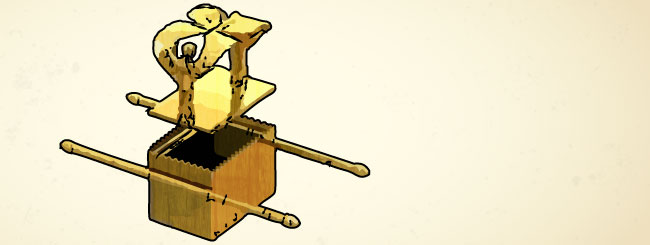








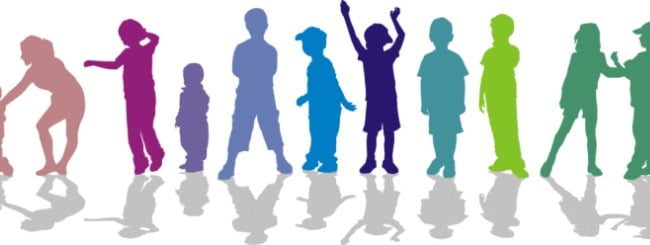

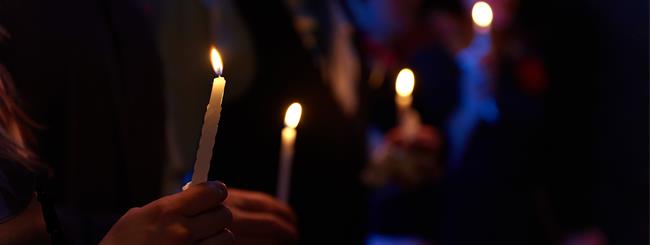
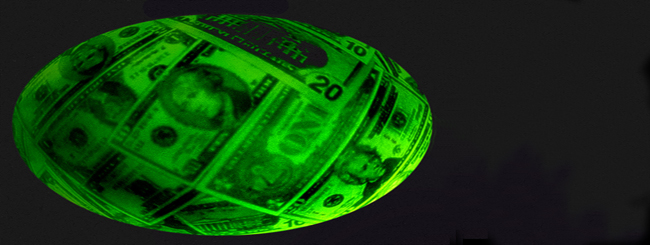

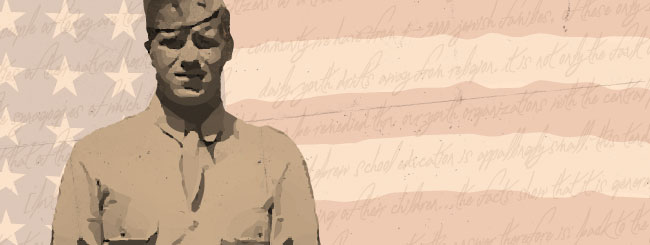
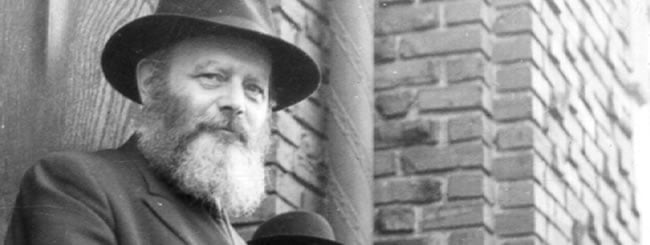






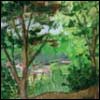
Join the Discussion
Blessings and Gratitude
you guys don't have a clue on how happy I got when read about it in the Chabad site this morning!!!
Thank you so much!!